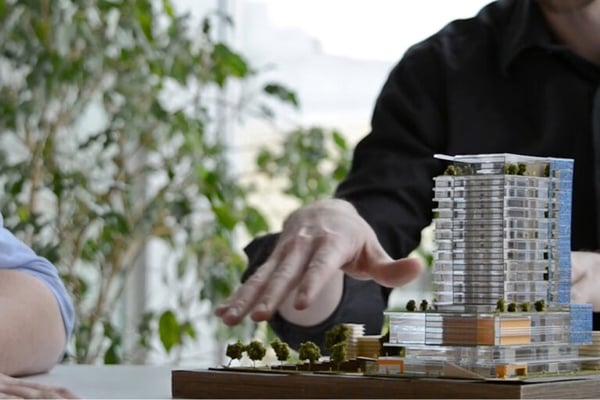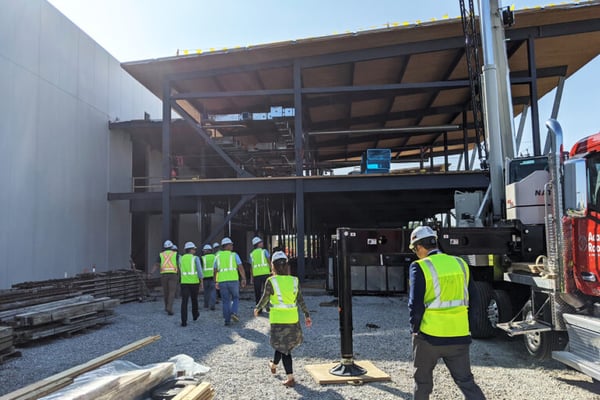Cost overruns are any expenses that push a project beyond the established budget. On building projects, overruns can occur for several reasons, including inaccurate cost estimates, unforeseen fluctuations in construction costs, and owner initiated changes during construction. Although architects play a key role in mitigating overruns, building owners can also help keep costs low.
On every project we undertake, we help clients manage budgets and make the most cost-effective decisions. In this article, you will learn four tips for preventing cost overruns, including:
- Make well-informed decisions early
- Invest in Pre-Design Services
- Pick a trusted partner
- Understand the costs of a building project
With these tips in mind, you can start the design process with confidence, knowing you are prepared to keep your budget on track. Although there is no guarantee a project will not go over budget, these best practices will increase your chances of staying within your budget’s parameters.
4 Ways to Prevent Cost Overruns
1. Make Well-Informed Design Decisions Early
To prevent cost overruns, make decisions early in the architectural process. In the early phases (Pre-Design, Schematic Design, and Design Development), the design is malleable and can be changed easily. Later, in the Construction Documents phase, your architect will start writing specifications that communicate the design intent to the contractor.
Making changes in this phase is more difficult as the construction specifications are underway. Therefore, it’s important to commit to a final plan at the end of Design Development.
Making changes is even more difficult during construction. Whether you are looking to change the scope of the project or simply switch a material, your architect will need to issue a change order.
Occasional change orders are expected, and to cover these costs, your architect will allow for a contingency in your budget. Typically, construction contingencies are 3-5% for new buildings and 5-7% for renovations.
If you make changes that are beyond the scope of the contingency, you risk a cost overrun. Committing to design decisions in the early phases of the design process is the best way to maintain your project’s budget.
Keep in mind: You do not need to rush through the early phases. It is better to take your time and explore ideas before making a final decision.

Testing concepts and making decisions early can prevent costly change orders.
2. Invest in Pre-Design Services
Every building project presents unknowns, and to prevent cost overruns, your architect should investigate these unknowns before construction begins. Depending on your project, your architect may recommend several pre-design services.
For example, if you are starting a renovation, they may need to analyze the building’s existing condition and determine if you need to hire any third-party services like asbestos removal. Other projects may require site surveys to determine if the soil conditions can support the planned structure.
Often, pre-design research is outside the scope of basic services and will be billed as a supplemental service. Although supplemental services are an additional project cost, they are a sound investment. The more an architect knows about a project, the less likely you are to face a costly surprise in construction.
3. Pick a Trusted Partner
Whether it’s your architect or contractor, work with someone you can trust. Too often building owners are tempted to partner with someone who offers the lowest possible fee. While it’s important to keep costs low, choosing someone based on fee alone may cost you more in the long run.
Building projects can be long and complicated, so work with someone who will lead you through the process and deliver a project that aligns with your priorities. An architect who works in a client’s best interest will find solutions that balance project goals with the budget. The additional money spent on an architecture fee is pennies compared to the price of cost overruns.
Likewise, a trusted contractor will work on behalf of a building owner and address issues before they arise. They will look ahead, keep an eye on costs, and try to assure the project is delivered within budget.

Working with a trusted partner will help construction run smoothly.
4. Understand the Costs of a Building Project
Lastly, you should consider all the costs that go into a building project when planning your budget. Building projects present many costs beyond construction and architecture fees. Often, your architect will refer to these costs as project costs or “soft costs.”
Many project costs will include:
- Legal fees
- Real estate and land acquisition fees
- Building permit review fees
- Furniture, Fixtures, and Equipment (FFE)
- Builder’s risk insurance
This list is not exhaustive. For a more complete list, read our guide to construction and project costs.
In the early phases of the architectural process, it is important to account for these additional expenses and factor them into your budget. Doing so will give you a more accurate understanding of what you need to pay to complete the work.
The exact project costs you will encounter depend on your project’s scope and specifications. Be sure to talk to your architect to learn how they can help you track these additional expenses.
Planning Your Budget
Cost overruns are often a building owner’s greatest fear—and for good reason. A ballooning budget will often derail a project.
Although architects can help you manage costs, building owners also play a key role in keeping a project on track. Commit to decisions in the early phases of the architectural process, invest in supplemental pre-design services, hire a trusted partner, and account for all project expenses.
By following these best practices, you are more likely to deliver a successful project.
Ready to start planning your budget? To determine how much you will pay for design services, read about the four factors that influence architectural fees.
